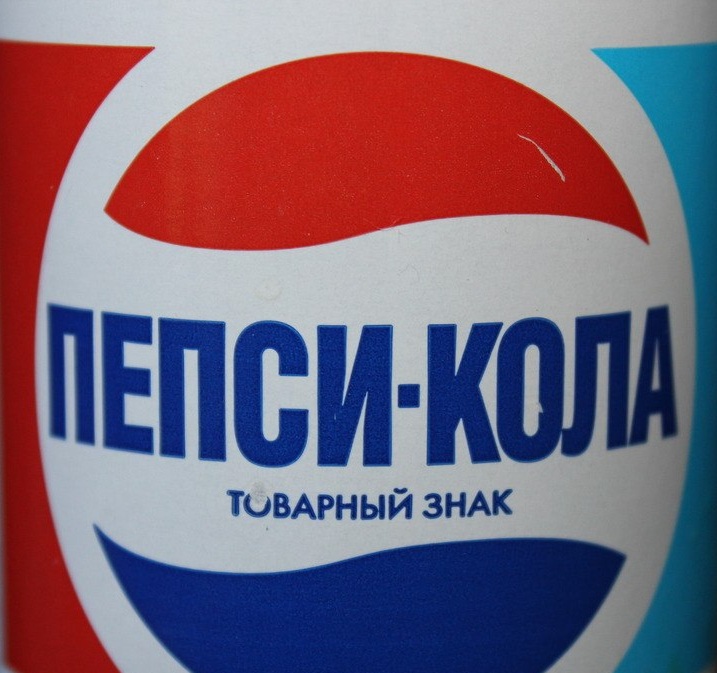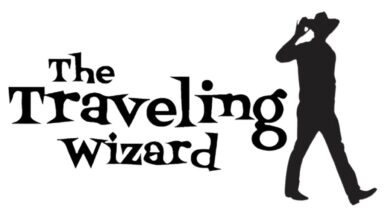I guess before you start thinking how amazingly multilingual I am, I should point out that I don’t read Russian. Let me take that back; what I mean to say is that I don’t understand or speak Russian. I do however have the ability to sound out words. Remember when you first learned to read in first grade and you were so proud that you could finally read every billboard aloud that your parents drove past? That’s where I am. A month ago I looked at a Russian word the same way that I look at Chinese: an incomprehensible labyrinth of symbols with foreign meanings that no one could understand except for people who live in Moscow or Siberia.
I planned a trip to Eastern Europe a few months ago and as I was flitting through some things-you-have-to-see websites devoted to Bulgaria and Ukraine, it suddenly occurred to me that I might have a problem. These former Soviet bloc countries use the Cyrillic alphabet; and guess what? Me no understand Cyrillic! I usually try to learn a few key phrases to get me by in any country I visit, but in this part of the world “Good morning comrade” and “I’d like some more vodka” only get you so far. The real issue is how to read a train timetable, how to understand if you’re in the right place, and how to make SURE you don’t order the famous “lard platter” in Ukraine accidentally. I usually go with the flow and count on people to help me in most places, but I suddenly recalled a scary experience in China where I was trying to get back to Shanghai at dusk and every taxi driver I flagged down kicked me out of the cab because I couldn’t write “Shanghai” in Chinese. That was a tough language lesson.
Determined to gain some comprehension of the Russian language, I downloaded a Russian flash card app. There it is. Step 1. Download a Russian alphabet flash card app. They’re often free and give you something to do when you need a break from Facebook. What you need to realize when you do this, is that the letters used in Russian are used in other Cyrillic based languages as well. Bulgarian and Ukraine, for example, have their own languages. The fact that they share the same alphabet is not so different than Spanish and English sharing the same alphabet. The letters are almost exactly the same, but there are a few added letters here and there. Once again, the same occurs in Spanish with the letter “ll” and the “n” with the tilde over the top. So, how difficult is it to learn the Russian alphabet? Not hard at all. I taught a friend of mine all the letters on a train ride in less than an hour.
The most confusing thing about the language is that some of the letters we use, referred to as the Roman alphabet, look just like some of the Cyrillic letters but have completely different sounds. C is an “S”, H is an “N”, P is an “R”, and so on. Just when you think you’ve got that down, they throw in a backwards “R”,”N” and “E”, none of which sound like what you think they should. For those of you who are still reading, here’s the breakdown: (if you get bored, skip past this part)
(Reprinted from http://www.russianlessons.net)
Russian letters that are (almost) the same.
А а – Pronounced like the “a” in the word “father” or “car”. It is not the ‘flat’ “a” sound you sometimes hear in words like “cat” or “flat”.
К к – Pronounced like the “k” in “kitten” or “kangaroo”. This letter replaces the english “c” sound in words like “cat”.
М м – Pronounced like the “m” in man. (Note: Unlike english, the hand-written “м” should always start from the bottom)
O o – When stressed, it is pronounced like the “o” in “bore”. When un-stressed it is pronounced more like the letter “a”. (See later notes.)
Т т – Pronounced like the “t” in “tap”. (Note: The hand-written (and italic) form is “т”. It should always start from the top, as it looks quite similar to the letter “м”)
Russian letters that look like English letters but sound different.
(These are the most important to learn so you don’t get them mixed up.)
В в – Pronounced like the “v” in “vet”. (Equivalent to the english letter “v”).
Е е – Pronounced like the “ye” in “yes”.
Н н – Pronounced like the “n” in “no”. (Equivalent to the english letter “n”).
Р р – Pronounced like the “r” in “run”, but it is rolled. (Equivalent to the english letter “r”).
С с – Pronounced like the “s” in “see”. (Equivalent to the english letter “s”). (It might help to remember that it’s used like the “s” sound in the english words “centre” and “cent”.)
У у – Pronounced like the “oo” in “boot” or “root”.
Х х – Pronounced like the “h” in “hello”. However, this is often pronounced more like the “ch” in the Scottish “Loch” or German “Bach”, or the spanish “x” in “Mexico”.
Russian letters that look unusual, but have familiar sounds
Б б – Pronounced like the “b” in “bat”. (Equivalent to the english letter “b”).
Г г – Pronounced like the “g” in “go”. (Equivalent to the english letter “g”).
Д д – Pronounced like the “d” in “dog”. (Equivalent to the english letter “d”).
З з – Pronounced like the “z” in “zoo”. (Equivalent to the english letter “z”).
И и – Pronounced like the “i” in “taxi”. (Sometimes equivalent to the english letter “i”, the short ‘ee’ sound.). (Note: The hand-written form for “и” looks a little like the english “u”).
Л л – Pronounced like the “l” in “love”. (Equivalent to the english letter “l”).
П п – Pronounced like the “p” in “pot”. (Equivalent to the english letter “p”).
Ф ф – Pronounced like the “f” in “fat”. (Equivalent to the english letter “f”).
Э э – Pronounced like the “e” in “fed”.
New Russian letters and sounds
(The sounds will be familiar, but they don’t have their own letter in English).
Ю ю – Pronounced like the “u” in “universe”. (Pronounced much like the english word “you”).
Я я – Pronounced like the “ya” in “yard”.
Ё ё – Pronounced like “yo” in “yonder”.
Ж ж – Like “s” in “measure”, “pleasure” or “fusion” or like “g” in colour “beige”. (As there is no english symbol for this sound, it is usually represented as “zh”)
Ц ц – Similar to the “ts” sound in “sits” or “its”.
Ч ч – Pronounced like the “ch” in “chips” or “church” .
Ш ш – Pronounced like the “sh” in shut.
Щ щ – Pronounced like “sh” but with your tongue on the roof of your mouth. Try putting your tongue in the same position as you would to say “ch” but say “sh” instead. English speakers may find it hard to define the difference between “ш” and “щ”.
Ы ы – Pronounced like the “i” in “bit” or “ill”. (Said with your tongue slightly back in your mouth.)
Й й – This letter is used to form diphthongs. So “oй” is like the “oy” sound in “boy” or “aй” is like the “igh” in “sigh”.
Pronunciation Symbols
(These letters have no sound on their own, but are still considered letters.).
Ъ ъ – The ‘Hard Sign’ is rarely used. It indicates a slight pause between sylables.
Ь ь – The ‘Soft Sign’ makes the previous letter ‘soft’. Think of the “p” sound in the word “pew”. (Try inflecting a very slight “y” sound onto letter before it.)
If you’ve actually read through all of this, you’re probably a linguist, college professor or a really good accountant. I have a short attention span. I get lost quickly which is why an app works for me. It’s one letter at a time and it’s like a game. I like games. I don’t like memorization. That’s why I’m an entertainer/travel show host and not a Supreme Court judge. Make it fun or I’m off riding bicycles.
The second step to reading Russian is to practice sounding out words. That’s it. Step 2. This is the really fun part. There are a lot of sounds that you won’t be able to make at first and you’ll be reminded of your first grade textbooks, but you’ll soon realize that you can spell almost anything you can in English with Russian letters. Traveling in Eastern Europe and sounding out what to me had once been incomprehensible things, I was rewarded by words that I already knew. There’s a surprisingly large number of words that we share with our Russian brethren.
готель – okay, it’s “gotel”, but it’s close enough to hotel to figure it out
ресторан– same thing…what the heck is a ресторан? It’s a restaurant.
таксі– this one’s a little obvious, I’ll let you figure it out.
фотограф– I saw this sign everywhere. I would have never figured it out without my handy dandy Russian letters knowledge. You get 10 points if you figure it out.
The most useful thing about being able to sound out Russian letters is to figure out where you’re going. When you’re in an airport or train station that has just Cyrillic letters, you’ll thank yourself for taking a few hours to learn these symbols. When you’re driving a car along the Ukrainian coast and you know that Ялта means “Yalta”, you’ll breathe a deep sigh of relief.
As Americans, we have a cocky attitude that if someone is visiting our country, “they need to speak English”! As ethnocentric as we are, it’s not a big stretch to realize that there are other countries that think the same thing about their language. The key to being a great traveler is to embrace the differences of other places and other cultures. If they were the same as us, that really wouldn’t be that exotic would it? It would be easy and comfortable, but then again that’s not really what travel is about.
Download the app. Learn your letters. Impress your friends. Post secret messages in Russian letters. The fun never ends.






Leave a reply
You must be logged in to post a comment.